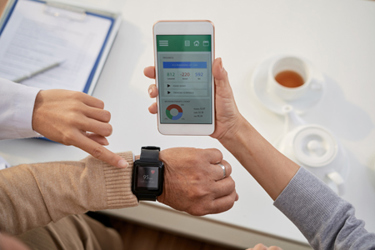8 Essentials For Using DHTs In Clinical Trials

By Dan Schell, Chief Editor, Clinical Leader

A year ago (December 2023), the FDA released its Digital Health Technologies for Remote Data Acquisition in Clinical Investigations Guidance that outlines recommendations for using digital health technologies (DHTs) in clinical trials. DHTs include technologies such as mobile apps, wearables, sensors, and other devices that collect and transmit data (e.g., physiological, behavioral, and environmental) remotely. The FDA recognizes DHTs can help make trials more efficient, flexible, and accessible, especially when used with DCTs or hybrid trials. Here are eight key takeaways from the guidance:
1. Regulatory Considerations
- Regulatory Classification: DHTs may be subject to FDA regulation as medical devices if they are intended to diagnose, treat, or monitor a disease or medical condition. However, many DHTs that simply collect and transmit data are not considered medical devices unless they have specific claims.
- Risk-Based Approach: The FDA encourages a risk-based approach to evaluating DHTs. The level of regulatory oversight depends on the risk associated with the device’s use, particularly in the context of clinical investigations.
2. Data Integrity and Quality
- DHTs used in clinical trials must ensure the integrity, accuracy, and reliability of the data they collect.
- Sponsors should establish clear data-validation processes and ensure that remote data-acquisition technologies are consistent with GCP standards.
- You should also implement strategies to mitigate potential missing data issues, such as automated data monitoring and participant reminders.
- The FDA recommends that the data generated by DHTs be traceable, with clear documentation of data origin and any actions taken on the data.
3. Verification & Validation
- The guidance stresses the need for verification and validation, but you should understand the differences. Verification ensures that a DHT accurately and precisely measures the intended parameter (e.g., temperature, pressure), while validation confirms that the DHT appropriately assesses the clinical event or characteristic in the target population (e.g., step count, heart rate). Verification is often a component of validation, as validation depends on thorough testing and verification throughout the development process. Both processes should address all relevant DHT functions in the clinical investigation context.
4. Data Security and Privacy
- When using DHTs, you need to ensure robust security measures (e.g., comply with HIPAA and other applicable data privacy regulations) to safeguard data at rest and in transit against cybersecurity threats. Some of the data privacy/security risks include:
- Potential disclosure of personally identifiable information or participant locations due to data breaches in the DHT or associated storage systems.
- Data sharing with third parties through end-user licensing agreements or terms of service, which may allow manufacturers or others to access trial data.
- The need to inform trial participants about data access and collaborate with manufacturers to adjust terms of service, if necessary, to protect participant privacy.
5. Considerations for Study Design
- Informed Consent: When using DHTs in a clinical trial, participants should be informed about how their data will be collected, transmitted, and used. This information should be clearly explained as part of the informed consent process.
- Protocol and Monitoring: DHTs should be integrated into the clinical trial protocol, including how the data will be monitored and used for analysis. The use of remote data must be carefully planned and validated.
6. Implementation and Oversight
- Sponsors should implement ongoing monitoring and oversight of both the technology and the trial participants to ensure that data collection methods are reliable and that any issues with data integrity or device malfunction are addressed promptly.
7. Postmarket Considerations
- For DHTs that are regulated as medical devices, the FDA may require ongoing postmarket surveillance to monitor device performance and any potential AEs related to the technology.
- Postmarket activities may include reporting adverse events, conducting recalls, and submitting periodic reports on the device’s performance.
8. Innovation and Flexibility
- The guidance encourages flexible approaches to study design and suggests that the FDA is open to innovative uses of DHTs, provided they adhere to regulatory requirements.
Hopefully, these takeaways help you if you’re considering incorporating any type of wearable or DHT into your study design. Keep in mind, too, that this guidance also provides information regarding DHTs that sponsors should include in:
- INDs
- investigational device exemption (IDE) applications
- marketing applications
- Drug Development Tool (DDT) submissions
- Medical Device Development Tool (MDDT) submissions.
